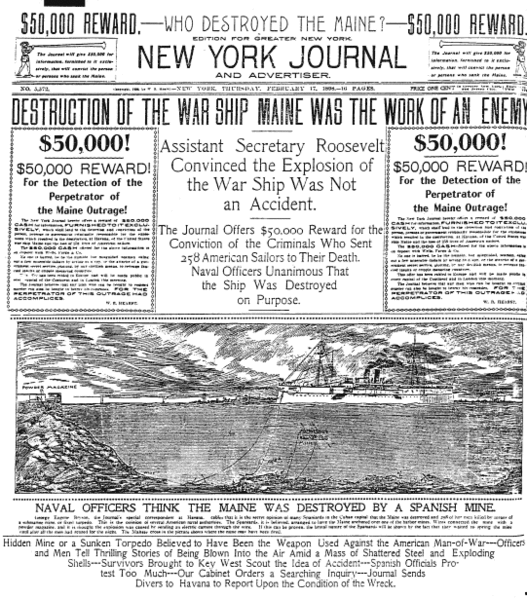Newsboy Strike of 1899
Rosalea Marshall
Junior Division
Newspapers were sold for a penny a paper by the "Newsies". In New York City the two biggest newspapers were New York World published by Joseph Pulitzer and the New York Journal published by William Randolph Hearst. When the U.S.S. Maine exploded in Havana harbor during a Cuban revolt against Spanish rule in February 1898 both papers said it was Spain who caused it to increased the numbers on papers sold. During the Spanish-American War that followed they both raised their price to 60 cents per bundle (as did most other publications.) The Newsboys sold more papers to balance the increase in price but when the war ended Pulitzer and Hearst kept their prices at 60 cents while other companies reduced their prices. Here are the front page of both papers on that date.
STRIKE! STRIKE!

Read all about it!



Many Newsies refused to sell the World (New York World) and the Morning Journal (New York Journal). On July 18, 1899, those who were still selling the World and Morning Journal found they had been shorted. When the Newsies paid for 100 papers they received less than 100. Word circulated and in days the Newsboys had formed a strike committee. Kid Blink, David Simons, Barney Peanuts, and Race Track Higgens are known as the leaders of the strike and quoted in newspapers often. The New York Tribune reported on a rally of several thousand Newsboys and quoted Kid Blink with his voice to give more character. For example here is one of Kids Blink saying, “Friens and feller workers, dis is a time which tries de hearts of men. Dis is de time when we’se got to stick together like glue.... We know wot we wants and we’ll git it even if we is blind.” The Newsies had parades to increase awareness, attacked delivery wagons for Hearst and Pulitzer papers to stop sales, and gathered on the Brooklyn Bridge. The Newsboys' Strike went across the New York metropolitan area, New Haven, CT, Fall River, MA, Providence, RI, and other cities where Hearst and Pulitzer publications were sold.
The publishers tried to fight back. Pulitzer tried to get the police to arrest boys for distributing handbills that urged customers to boycott his New York World which he called conspiracy. In an attempt to stop the strike Pulitzer and Hearst hired grown men to distribute their papers for a flat rate of two dollars a day which is more than the boys made in a week and instructed them to beat up any Newsboy who tried to stop them from selling. It did not work. The public affection grew for the Newsies, Pulitzer and Hearst were losing a fortune, and the circulation of the papers went down two thirds. Pulitzer and Hearst offered 55 cents per bundle but the the Newsies rejected.
Two weeks after the strike began Pulitzer and Hearst agreed to buy unsold copies. Even though the price stayed at 60 cent per 100 papers, the Newsboys had recieved a great deal! Now the Newsboys could buy extra papers and if it was a slow day they could get their money back.

Front Pages of The World (Left) and Journal (Right) day when the U.S.S. Maine exploded in Havana harbor during a Cuban revolt against Spanish rule and was start of the Spanish-American War